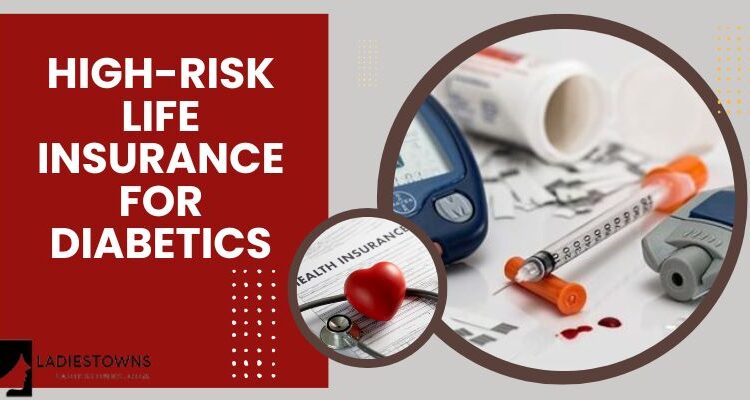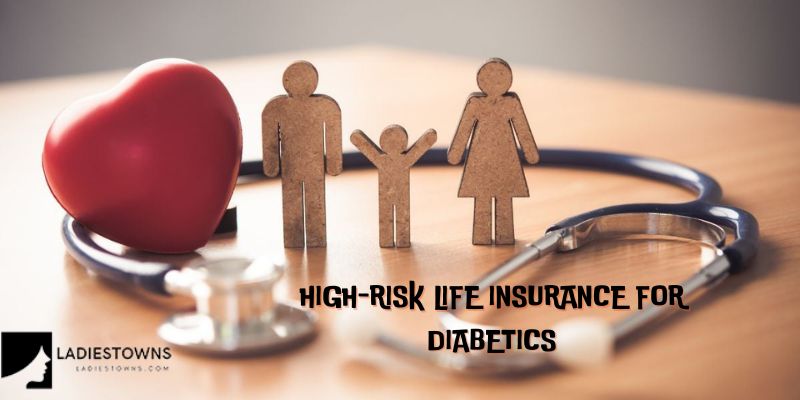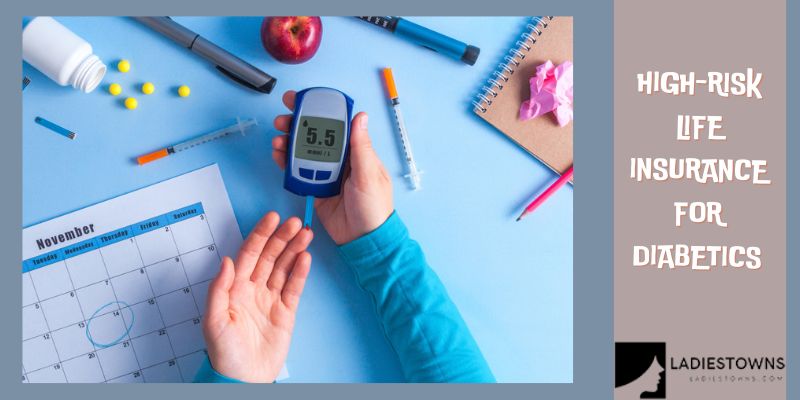
The most recent information available, the 2020 National Diabetes Statistics Report from the Centers for Disease Control and Prevention, estimates that 1 in 10 adult Americans have diabetes. It is possible to get life insurance if you have diabetes, but your selections may be limited and your premiums will likely be higher. ladiestowns.com will provide for you some information about High-risk life insurance for diabetics in this post.
Why life insurance companies care about diabetes

Diabetes automatically makes you “riskier” in the perspective of the insurer, just like any pre-existing ailment. Too much blood sugar causes diabetes, which raises the risk of developing other health problems later in life such stroke, heart disease, hypertension, and renal disease.
High-risk Life Insurance for Diabetics firms create policies and determine prices based on projected mortality, which is a little morbid to consider. Insurance companies defend themselves by raising prices and making it more difficult for persons with diabetes to qualify for coverage because diabetes carries a number of risk factors.
5 things High-risk Life Insurance for Diabetics look at

The manner you manage your diabetes will be carefully examined by insurers when you apply for High-risk Life Insurance for Diabetics. They will then use that data to determine whether to grant you a policy, which health class to assign you to, and how much to charge you. They emphasize these five main points:
1. Your age
Insurance companies weigh two figures:
- its age. Young applicants typically receive the best rates from High-risk Life Insurance for Diabetics providers, so it makes sense to purchase a policy as soon as you need one.
- your age at the time of your diabetes diagnosis. Your rate is probably higher the longer you’ve had diabetes. Therefore, if you were given a diabetes diagnosis when you were 10 years old, you will undoubtedly pay more than someone your age who was diagnosed with late-onset diabetes.
2. Type of diabetes
According to the CDC, type 2 diabetes accounts for 90% to 95% of cases in the United States, and insurers are typically more forgiving with this type. The symptoms are often diagnosed in maturity, and they are typically less severe. Some persons with Type 2 diabetes can control it with medicine, a healthy lifestyle, and regular exercise.
You’re more likely to be placed in a better health class (like Standard) and pay a lower premium because Type 2 diabetics are considered to be less hazardous by insurers than Type 1 diabetics.
Diabetes type 1 is less typical. People with it are typically identified while they are younger, and insulin therapy is required to keep the illness under control. If you have Type 1, your health class will likely be lower (like Substandard), and your rate will likely be greater. However, since different insurance companies have different perspectives on people with diabetes, if you’re generally healthy, you might be able to get a lower price by shopping around.
Most insurers will evaluate your diagnosis and course of treatment in the same way they do Type 1 and Type 2 diabetes. Gestational diabetes is a transient illness that can develop during pregnancy. Aim to apply for High-risk Life Insurance for Diabetics before getting pregnant or during the first trimester to avoid having to pay a higher premium. Otherwise, it would be prudent to wait to apply until after giving birth for a while. In that time, your diabetes might go away and you’ll be able to get a better rate.
3. The severity of your diabetes
Insurance companies will evaluate your average blood sugar levels using a blood test known as the A1C to determine the severity of your diabetes. In comparison to someone with a higher level, you will be viewed positively if the reading shows that your diabetes is under control.
An insurer may occasionally take findings from a glucose tolerance test into account rather than an A1C. The better it is for your life insurance application, the nearer you are to a normal blood sugar level.
In addition to testing, insurers will inquire about any consequences from diabetes, such as neuropathy (damage to the nerves) or retinopathy (damage to the retina). Although having these problems won’t inevitably result in increased rates, if it’s obvious that you’re not managing them well, you will.
4. How you’re treating your diabetes
If you can demonstrate that you are actively managing your diabetes, you have a better chance of locking in a coverage and paying a cheaper premium.
Different treatments are used. But generally speaking, maintaining a nutritious diet, getting regular exercise, taking an oral prescription, and visiting the doctor frequently are all indications that you’re making an effort to control the illness.
5. Other health factors
In addition to the major four, insurers additionally evaluate:
- the remainder of your medical background. High blood pressure, high cholesterol, and being overweight are all risk factors that can raise your rates.
- your genealogy in terms of health. Your insurer will inquire about any inherited illnesses including renal and heart problems that could put your health at danger.
- Your drinking habits. Overindulging in alcohol might hasten diabetes-related consequences like eye and nerve damage. This is why your insurance could inquire about your use of alcohol.
Choosing the right High-risk Life Insurance for Diabetics

It all boils down to your budget and whether you want to undergo a High-risk Life Insurance for Diabetics medical exam when choosing the best policy for you.
The primary choices for High-risk Life Insurance for Diabetics are as follows:
Term life insurance
duration High-risk Life Insurance for Diabetics is the most affordable and straightforward option, and it has a predetermined duration of 10, 15, or 20 years. This option is best suited for individuals who have their diabetes under control because you will need to complete a health questionnaire and have a physical examination.
Whole life insurance
Consider whole life insurance if you want to handle your policy like an asset. Lifetime coverage is provided, and each month, a portion of your money is invested to give your insurance a monetary value. Once your policy has accrued enough cash value, you can begin taking out loans against it.
Whole life insurance, on the other hand, can be five to fifteen times more expensive than term life and typically calls for a medical examination. Therefore, for Type 1 diabetics and for Type 2 diabetics who aren’t receiving treatment, reasonable rates or even coverage may be out of reach.
Group life insurance
People with diabetes can also obtain insurance through their place of employment. It is important to take advantage of group High-risk Life Insurance for Diabetics if your workplace provides it as part of your benefits package, especially if your employer pays all or part of the payments.
You won’t have to undergo a medical examination, but many businesses only provide coverage for one to two times your annual pay. Consider adding extra High-risk Life Insurance for Diabetics to your policy if you have financial dependents, debt, or possessions that need to be protected.





